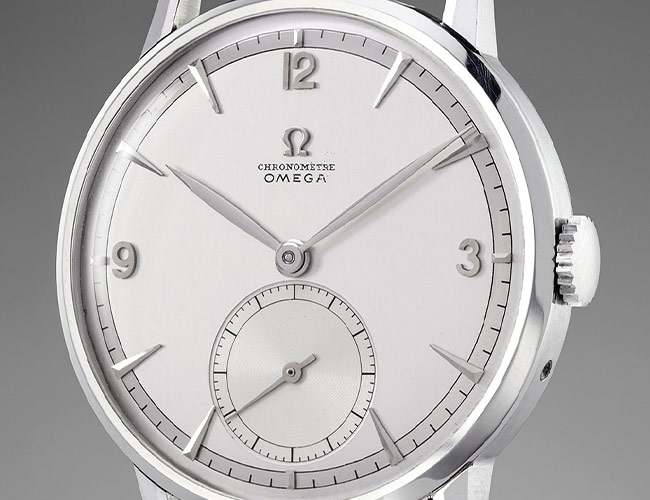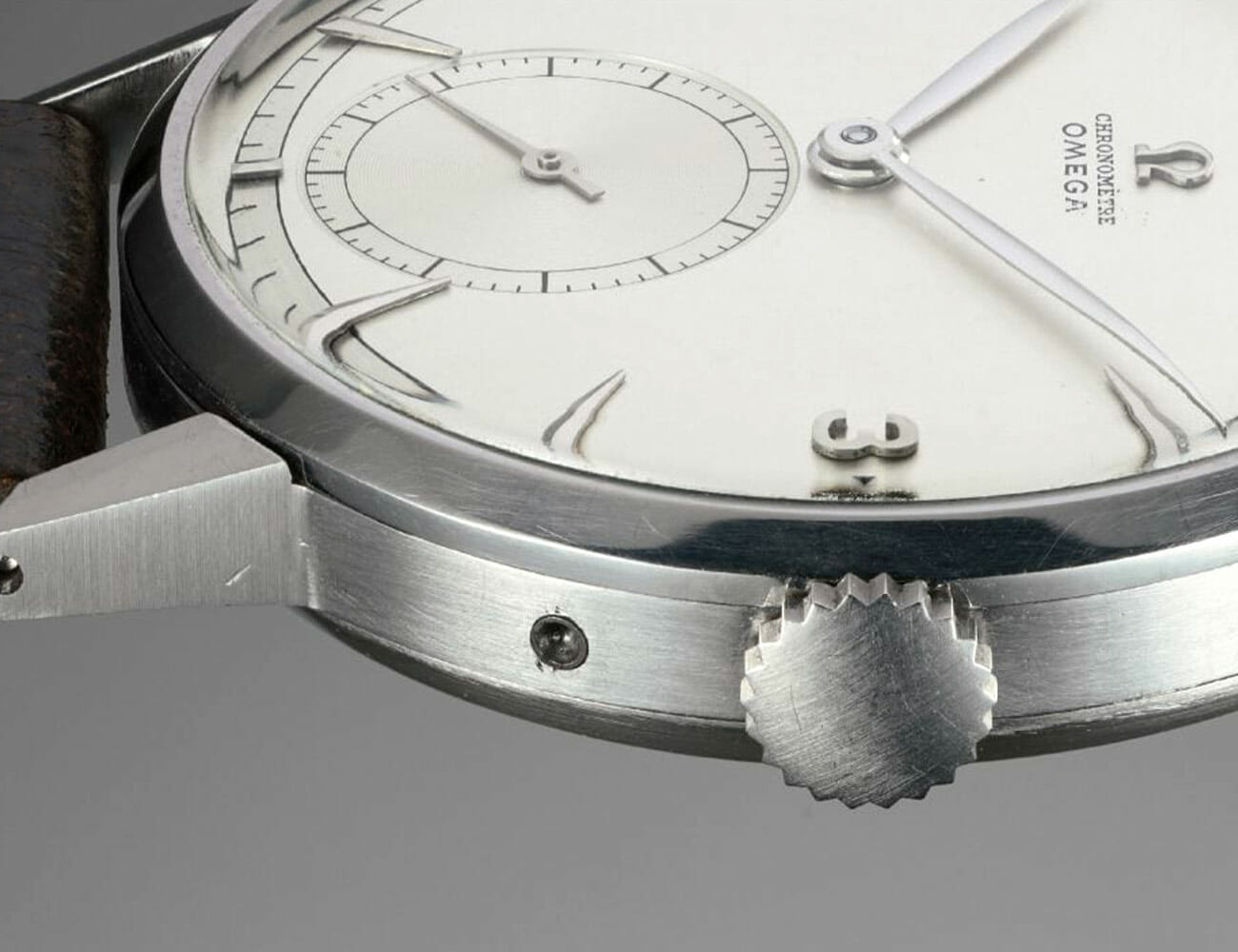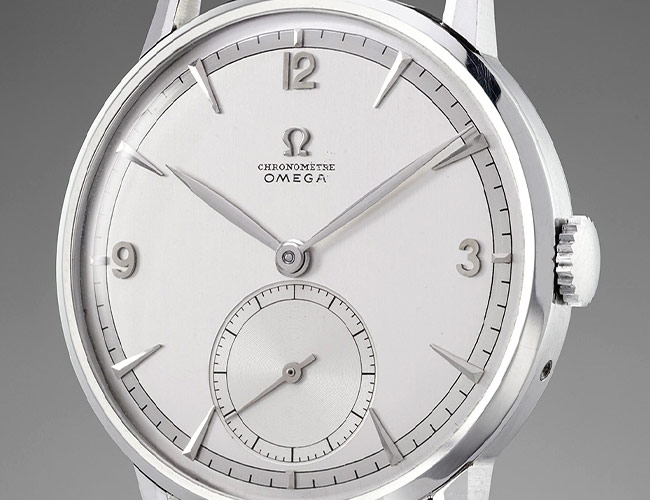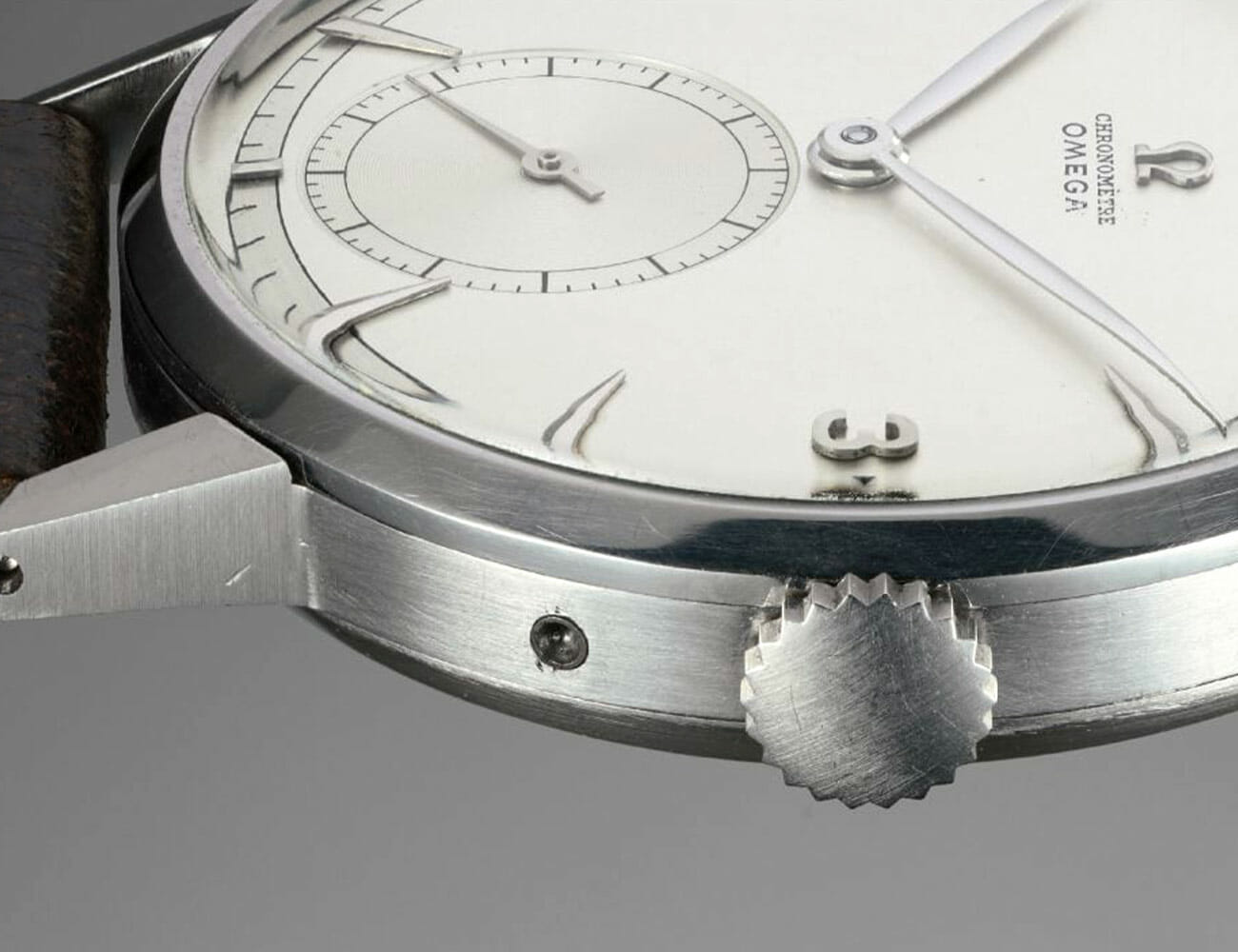Why Did This Understated Omega Watch from 1947 Sell for Almost $1.5 Million?
Welcome to “Watches You Should Know,” a bi-weekly (the once-every-two-weeks kind) column highlighting little-known or notable watches new and old that have interesting stories or have had a surprising impact on the industry.
This is the story of a curious feature of mechanical watchmaking called the tourbillon, and it’s a tale that’s ironic on many levels. The tourbillon’s purpose today is primarily “for show,” but its symbolism is powerful, representing wealth, prestige, and one of the most challenging feats of micro-mechanical craftsmanship. Originally intended to improve accuracy in pocket watches, it’s visually captivating and became so popular with high-end wristwatch brands that others have gone on to build more cost-effective versions. So what makes people so crazy about the tourbillon, and how did it become the emblem of high-end watchmaking that it is today?
The tourbillon could be considered a kind of watch escapement. (Please bear with a little technical talk.) The escapement regulates timekeeping in a watch (which provides the familiar ticking sound), and is the most visually animated part of the movement, as among its primary parts are the balance wheel, which swings back and forth multiple times per second. (This system is easy to spot even in the most common, inexpensive movements.) A tourbillon takes this entire structure and puts it in a frame that revolves a full 360 degrees. So it’s ticking and twitching and turning all at once. Tourbillons are extremely complicated to produce, with a lot of tiny, precise components — and they’re dazzling to observe.

The tourbillon was invented by none other than the seminal 18th-century watchmaker Mr. Abraham Louis Breguet, and the idea was to counter the effects of gravity on the escapement of a pocket watch. Pocket watches were largely worn vertically in waistcoat pockets, but even this orientation could change by up to 45 degrees, and gravity’s effects on the escapement would cause a deviation in timekeeping accuracy. (If the watch was then stored horizontally on a table at night, the effects could be even more pronounced.) By rotating the escapement, however, deviations would be “evened out,” as the escapement was constantly changing its orientation.
The simple fact that a wrist-born timepiece is constantly changing the orientation of the escapement has meant that the tourbillon is largely superfluous in modern watchmaking. Complicated and delicate, they’re generally found in very high-end luxury pieces which sticker prices starting in the mid to high five-figure range, and going way up from there.
In the 1940s, however, the tourbillon was a rare and largely forgotten curiosity of horological history, mostly found only in the occasional pocket watch. The Swiss were worried about the strong American and British watch industry (the Japanese threat was not yet apparent), and constantly improving accuracy was one way to stay relevant and competitive. Omega experimented with a wristwatch-sized tourbillon escapement meant to compete in third-party trials for “observatory chronometers” — watches that passed these tests and were given this designation would give Omega a legitimate claim to high accuracy and marketing clout.
Omega’s tourbillon movements were built to high standards and did well in the trials, but such competitions were essentially meant for R&D purposes as well as overall brand prestige — they were mostly never even put in watch cases. There were a total of 12 of these tourbillon movements made, and they took part in the observatory trials between 1947 and 1952. In 1987, seven of the tourbillon movements were rediscovered by Omega, rebuilt, cased, and sold to collectors. There was one more, however, that was originally cased in 1947 as a prototype with the apparent intent to eventually put it into production.

In 2017, this very watch was auctioned for almost $1.5 million. In retrospect, it represented the beginning of the modern tourbillon craze (though the craze is now abating compared to where it was several years ago). When Omega’s engineers produced a prototype tourbillon intended for a wristwatch in 1947, however, their goals were purely practical and chronometric. That’s very different from the contemporary “expensive novelty” status of tourbillons.
The Omega Calibre 30 I is notable even if it can’t claim to be the “first” tourbillon-equipped wristwatch — French brand Lip had one in the 1930s and other brands produced wristwatch-sized movements that never actually found their way into wristwatch cases. Too difficult and expensive to produce, the tourbillon was far from an efficient or effective way to improve accuracy.
At some point, however, people noticed that they look incredible…
Today, the watch and tourbillon scene is very different than it was when Omega’s 1947 prototype hid its tourbillon behind a solid case back as part of a largely undecorated movement. It’s now the symbol of haute horlogerie, often in watches costing as much as a house, and almost every high-end brand has made it a major part of their halo-product offerings. Even more notable is that brands are now trying to make “affordable tourbillons”: Stroll through the halls of the Hong Kong Watch & Clock fair, and scores of Chinese brands are offering tourbillons for far less. Even brands like TAG Heuer and Frederique Constant have made headlines with Swiss Made tourbillon watches costing under $20,000.
The brilliant idea of displaying the highly animated tourbillon on the front of a watch is claimed by Franck Muller in a piece from 1984 (before his eponymous brand was even established). Now it’s the norm, and tourbillon-equipped watches are often accompanied by a high level of finishing, as well as avant-garde designs meant to dazzle as they show off the delicate mechanics.
While still a relatively rare feature, tourbillons are today included among so many high-end watches that their novelty and exotic appeal is diminished. Unnecessary, overly complicated, inefficient, expensive, and technically anachronistic? Yes, but they are also nothing short of eye candy, as well as technically fascinating representations of history and craftsmanship. Mechanical watches themselves could be described in the same way.




